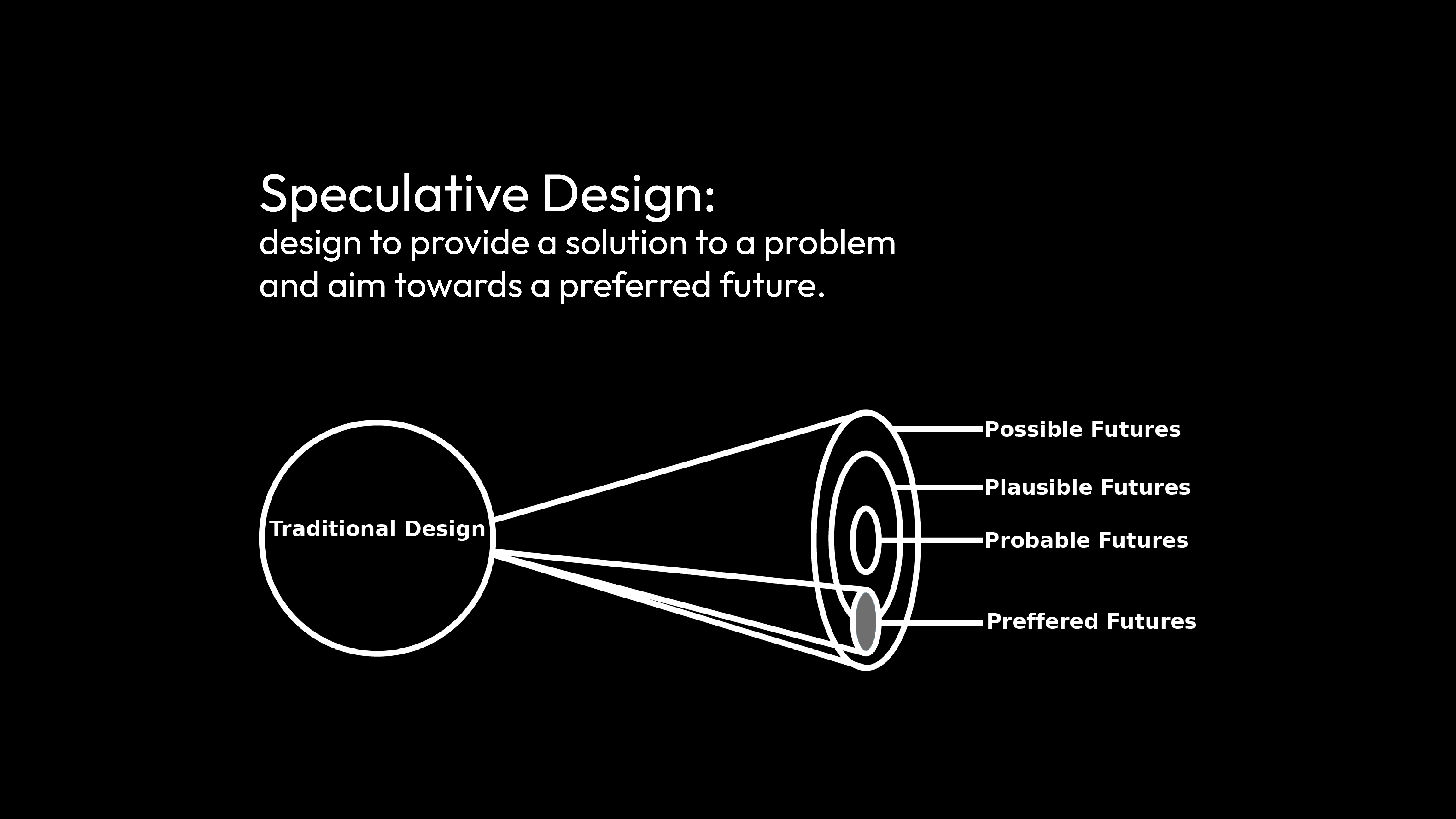

I worked with Millie Riley and Hattie Powell on this project.
we were tasked to interrogate USB chargers within the context of the Climate Emergency and finite resources. We are required to address the challenges and issues raised to develop concepts that imagine a society moving towards a more desirable future.
The brief mentioned there are 3 key components to this project which we are to display at an exhibition. Visualisation of issues, we are expected to portray the issue USBs are creating in a visual way, this could be in print form, 3D or other media. Post Growth Imaginary, this is where we present our idea and solution in a visual way. We must also produce a poster with the template provided.
To understand how necessary USBs are
in people’s everyday lives, we decided
to conduct an online survey for people
to fill out. The answers we received were
as expected, 100% of the people who answered said that they own a USB,
with over 90% saying they could not live
without one.
This data was useful because we realised
that USBs are so important in everybody’s
day to day life, we cannot simply stop
producing them. Meaning we need to
think of solutions to make them more
sustainable and environmentally friendly.
A starting point for our secondary research was to look at how USBs are powered. The main sources of electricity are natural gas, nuclear, and fossil fuels. Which are non-renewable and environmentally damaging. Researching further into these types of sources shocked us at how harming they are, therefore, we started looking at renewable and sustainable sources of generating power.
There are some very creative ways, for example in Japan they have dried and burned leftover biomass of dirty nappies to generate enough power for a retirement home. Another way, is thermoelectrics, in London they have used trapped body heat from the London underground, converting this into energy using a “seebeck method” to provide hot water to over 1350 homes and buildings in the Islington area. The Seebeck method works when two different metals are together surrounding a difference in temperature an electrical current is formed. Metals such as copper, iron or aluminium are good to use for this process.
We also looked at Hydro Power, this is where water is used to create an electrical current. It converts gravitational potential energy into power. This is a renewable source of energy because it relies on the water cycle, driven by the sun.
Our group decided to split up and think of as many different ideas as possible, then come back and discuss. We gave critical feedback and discussed how we could improve each others ideas, which ones we all preffered and which 4 to take forward and present.
This idea uses solar energy which charges a portable charging docks. There are multiple charging docks inside the main charging device so you are able to rotate them and always have one that is charged. Using Solar energy is a renewable energy source.
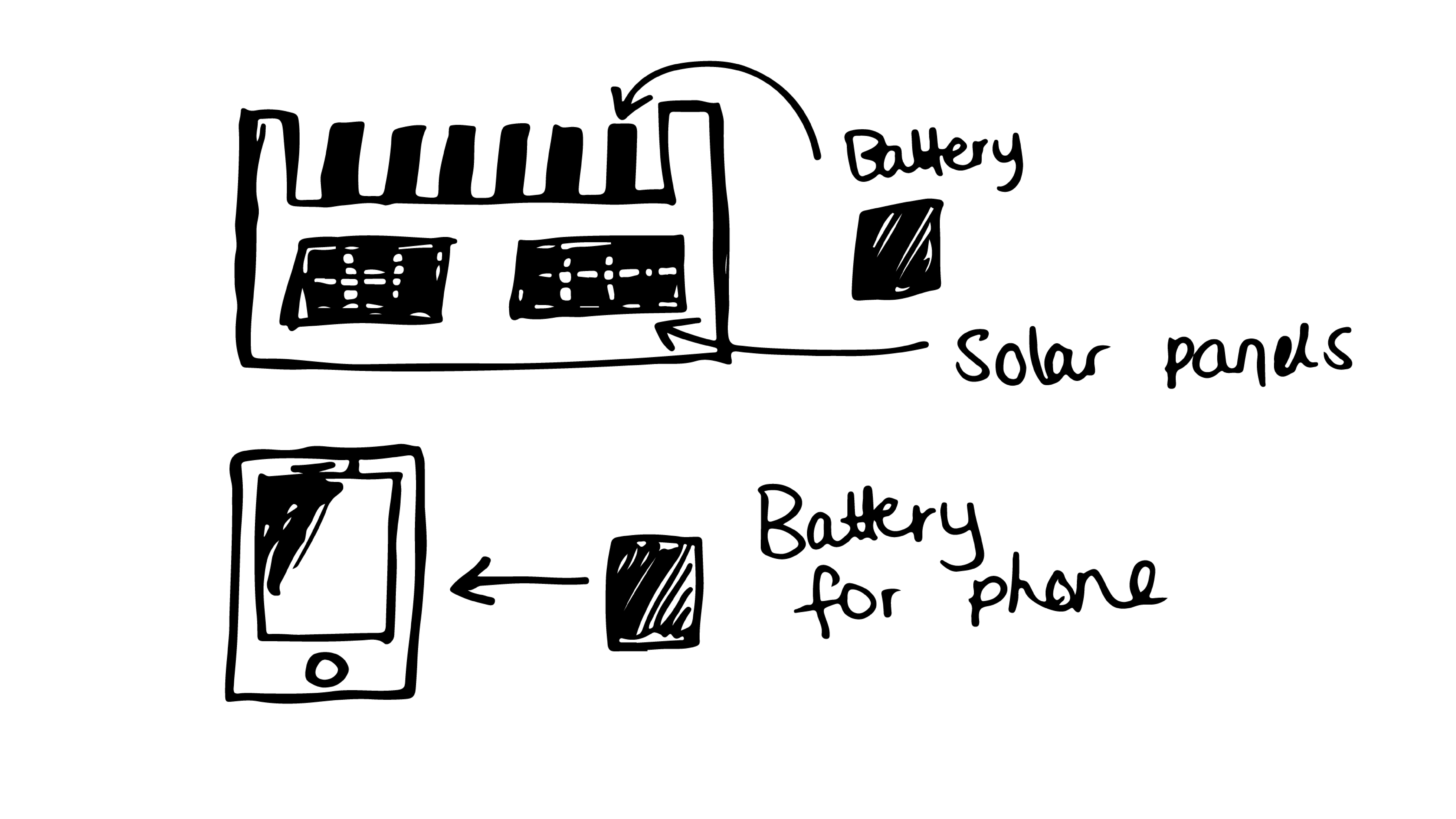
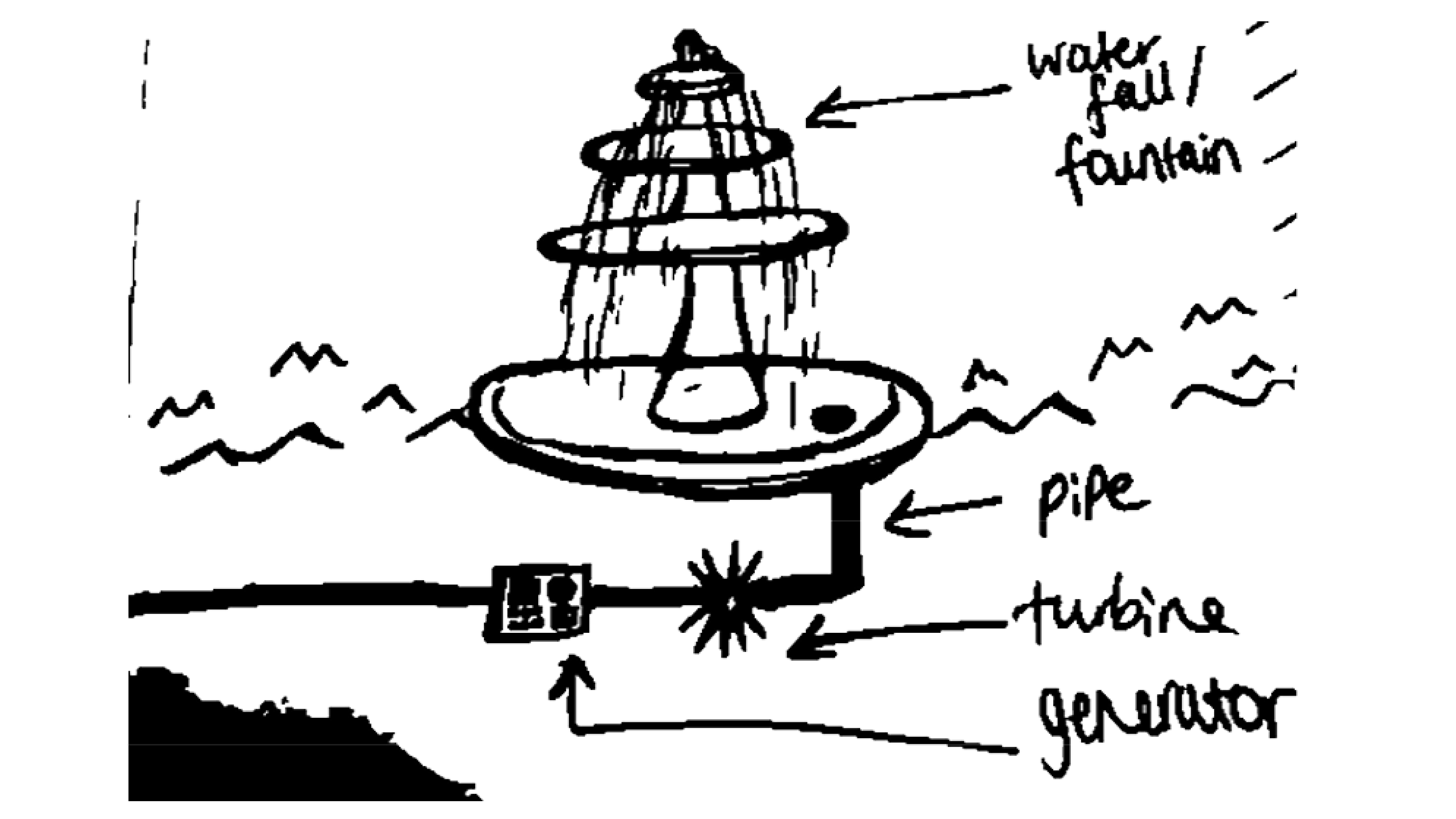
Idea 2, focuses on hydropower, another renewable energy source. The water fountain will be placed in the user's garden, it will be initially powered by solar energy. The waterfall will create hydropower when running to charge devices and provide energy for the user's house.
We liked this idea as it allows the user to have a lovely garden feature which creates renewable energy for their house.
Idea 3, uses a wind up mechanism, with a contactless charging pad on top. 45 seconds of winding will give you 5 minutes of charging time.
We took inspiration for this idea from wind up radios, which work from a magnet and coil of conductive wire attached to the winding mechanism. A current builds up as you turn the winding mechanism as the coil wraps around the magnet.
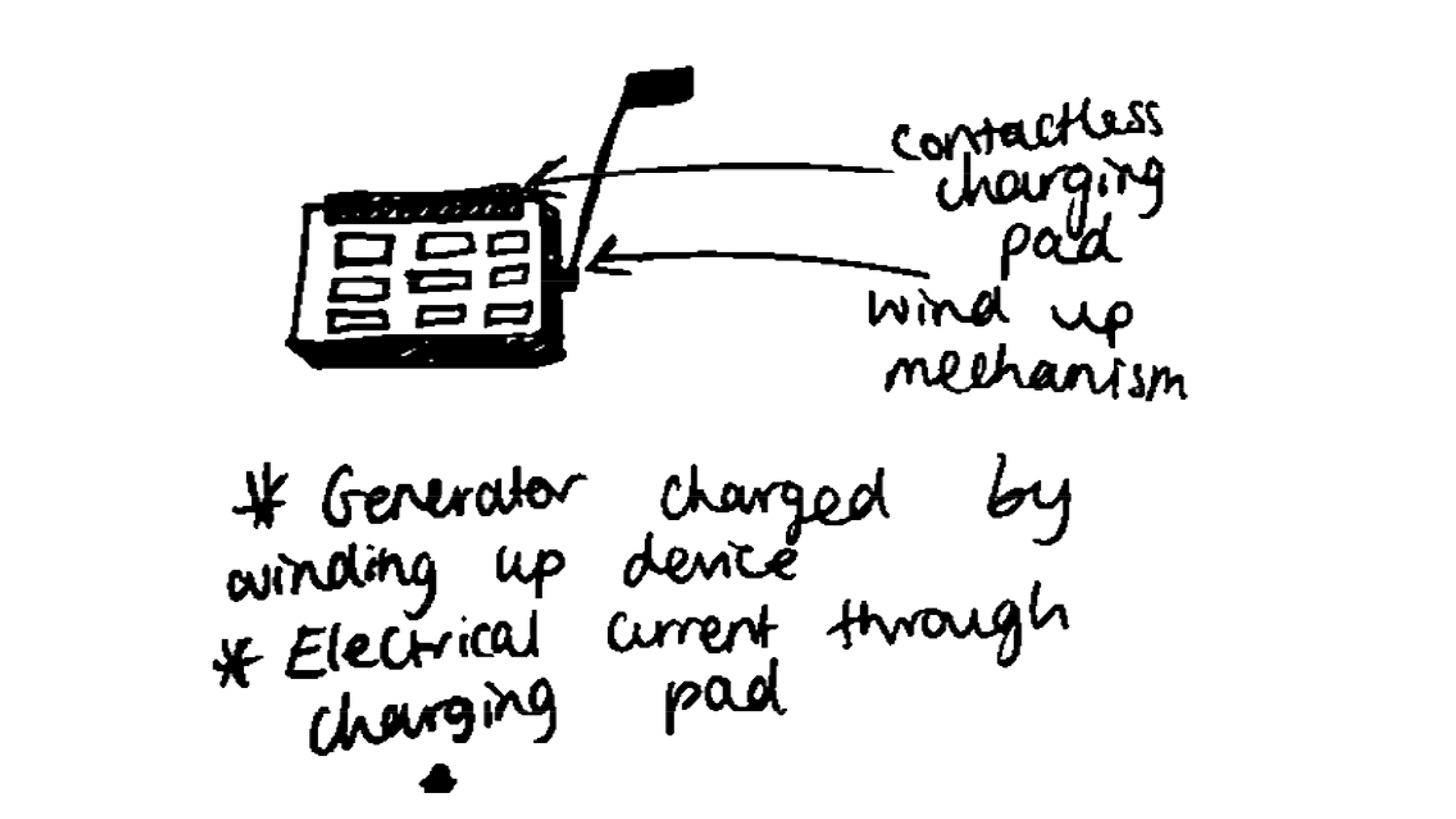
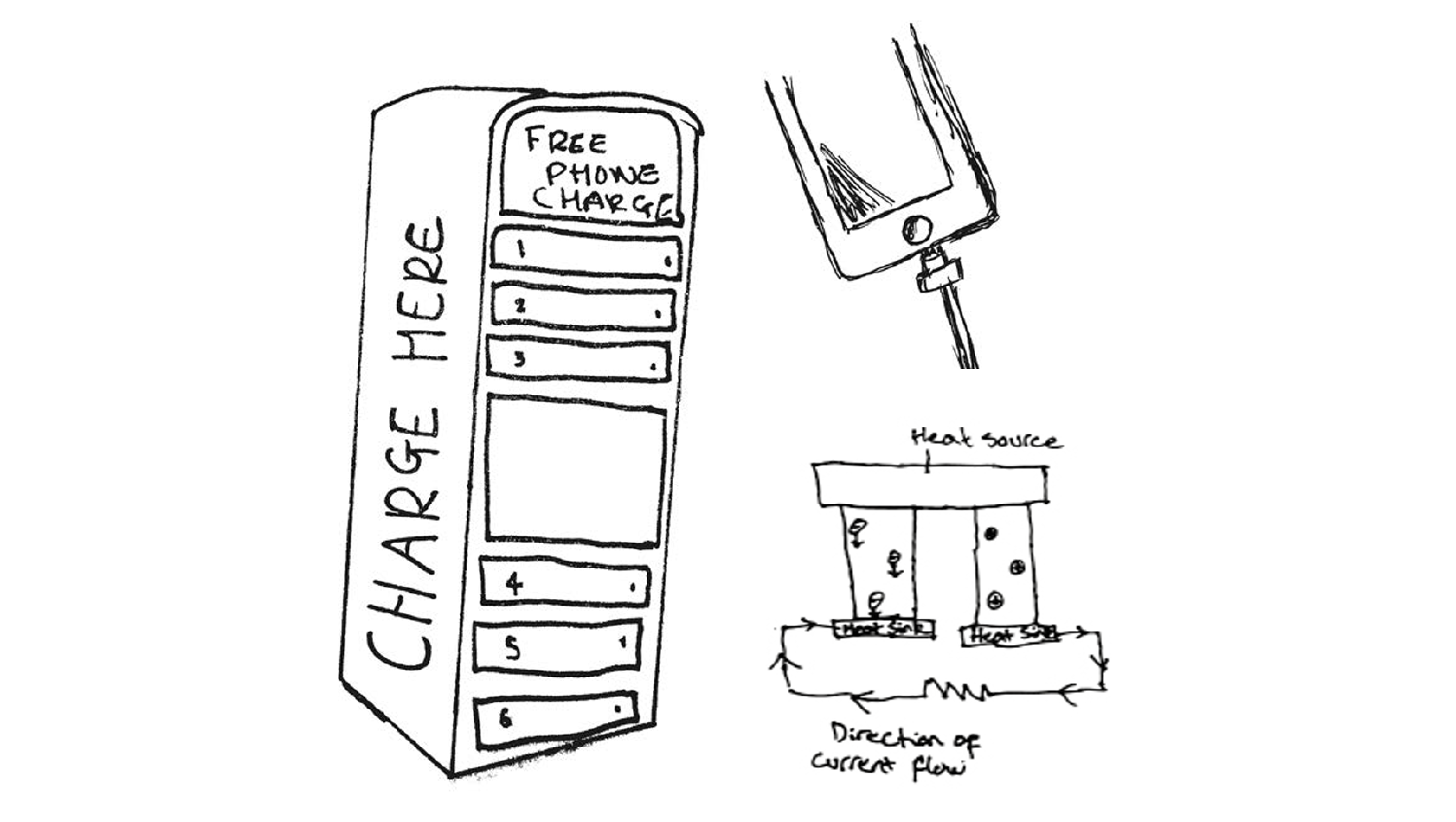
Our final idea uses body heat trapped in busy indoor places, such as, shopping malls to produce thermoenergy. This has been proven to work in the London Underground, where thermoenergy is providing hot water to over 1350 homes.
The energy created will be used to power the charging tower, placed in indoor spaces. Where the public can lock their devices in the compartment and charge their devices.
We came to the decision to take forward Idea 2. I was intrigued to learn a little about augmented reality and thought this was a great opportunity to showcase our system in AR. I created a motion design within After Effects which can be viewed on the artivive app.
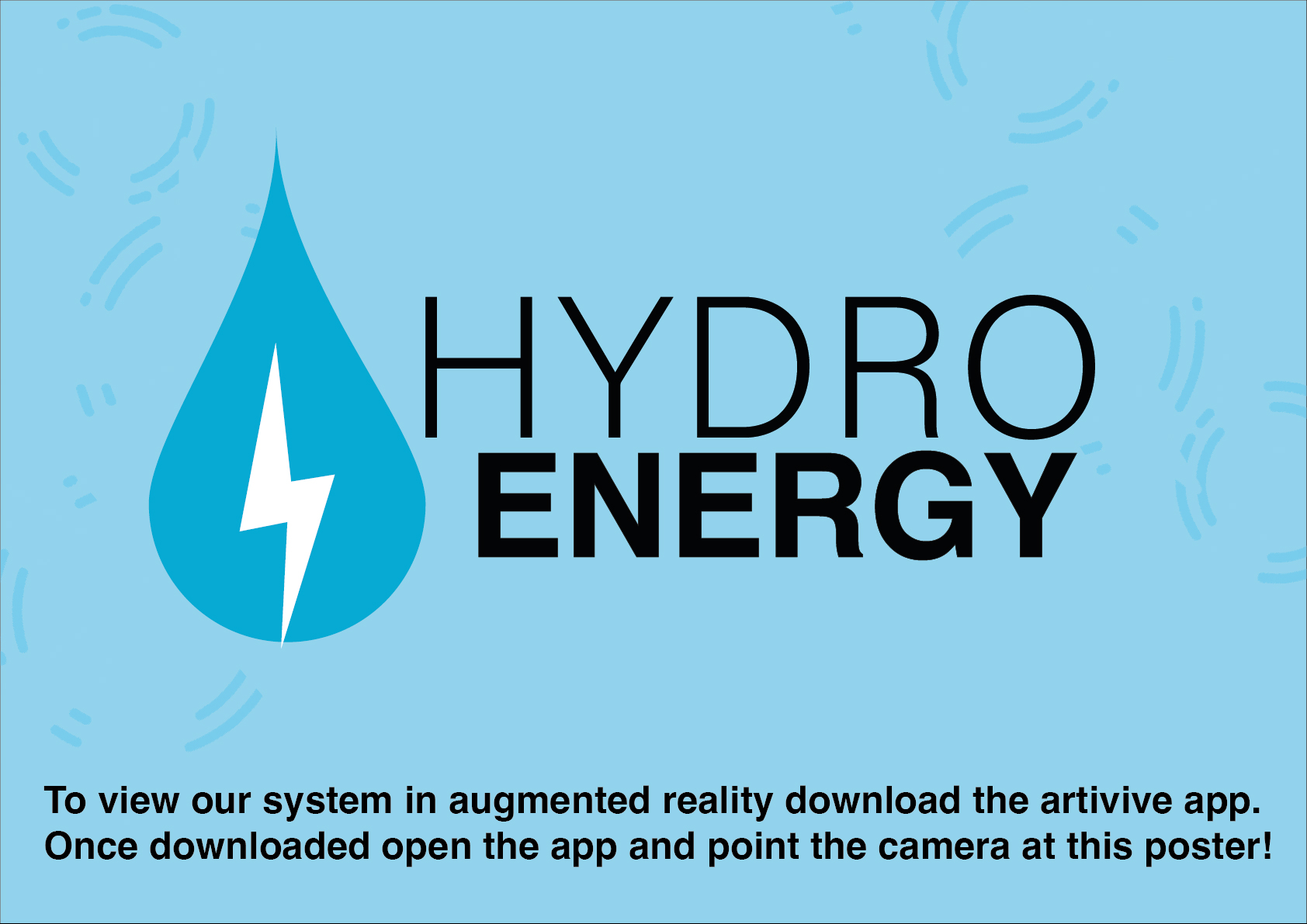
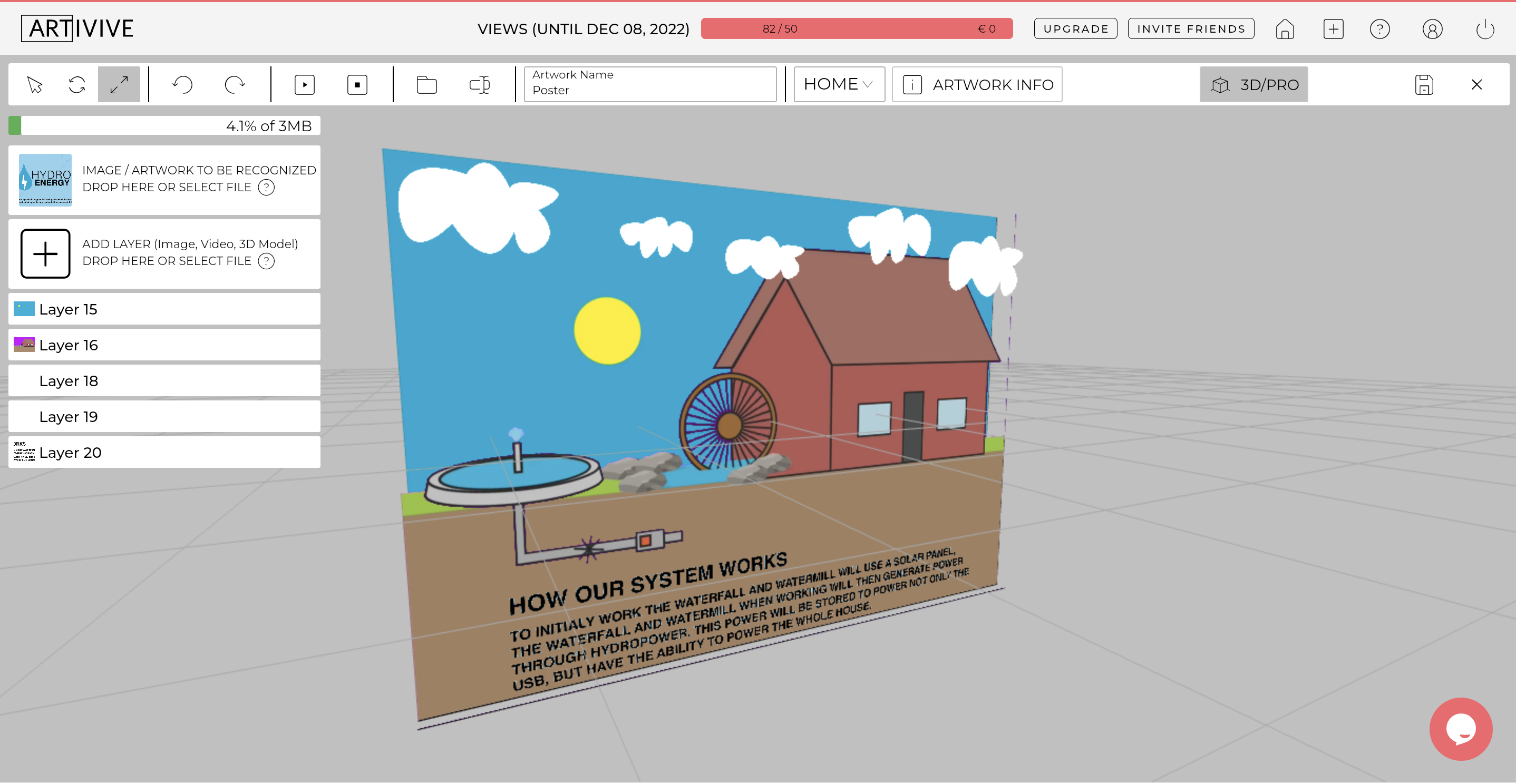
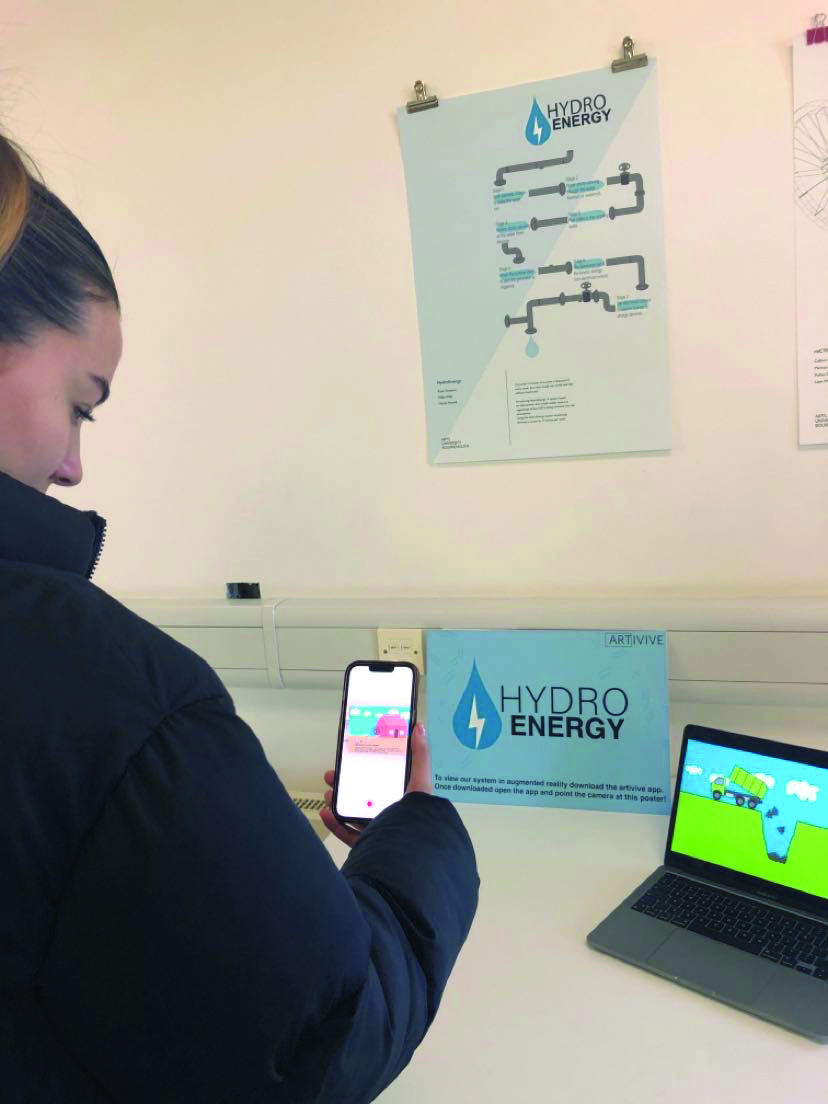
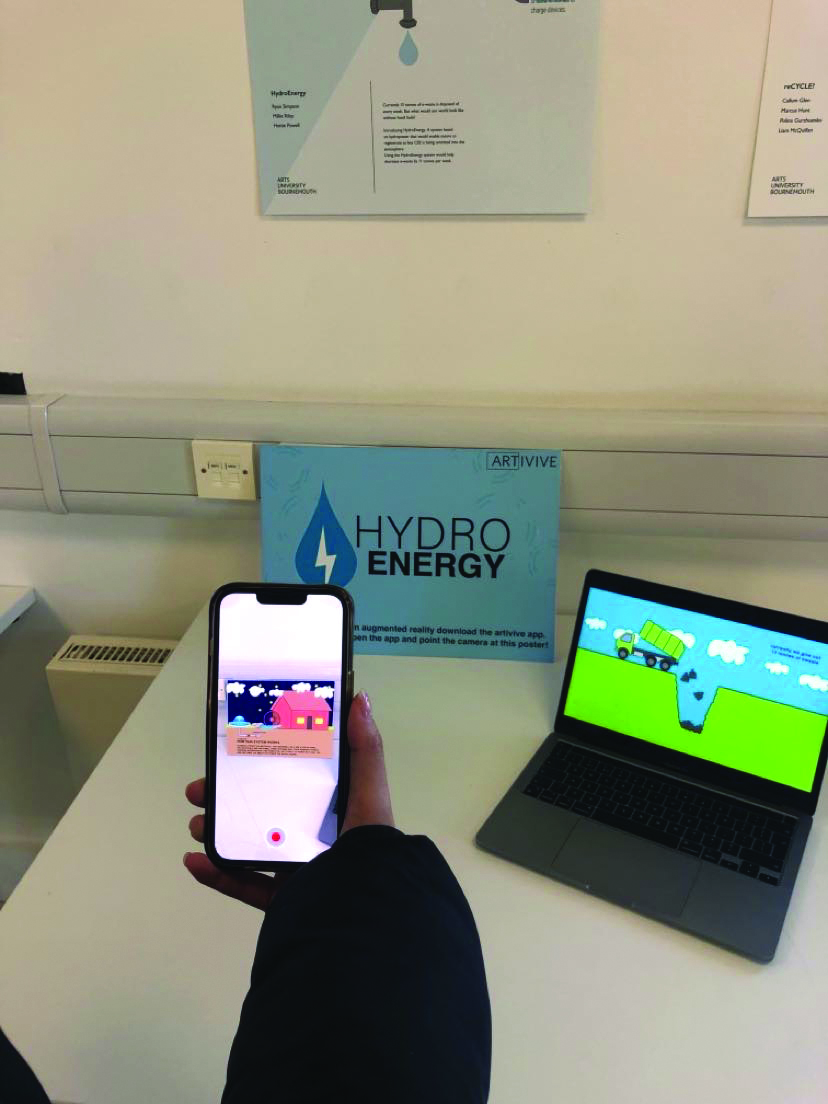
I decided I wanted to make an application for our system, which will be able to track the following:
-how much energy our system has created
-how much energy the user has used
-how much money the system has saved.
I used the blue colour scheme which has been used on our poster design to create a theme around our system.
I decided to use bar charts as a visual way to show the data collected by the application.
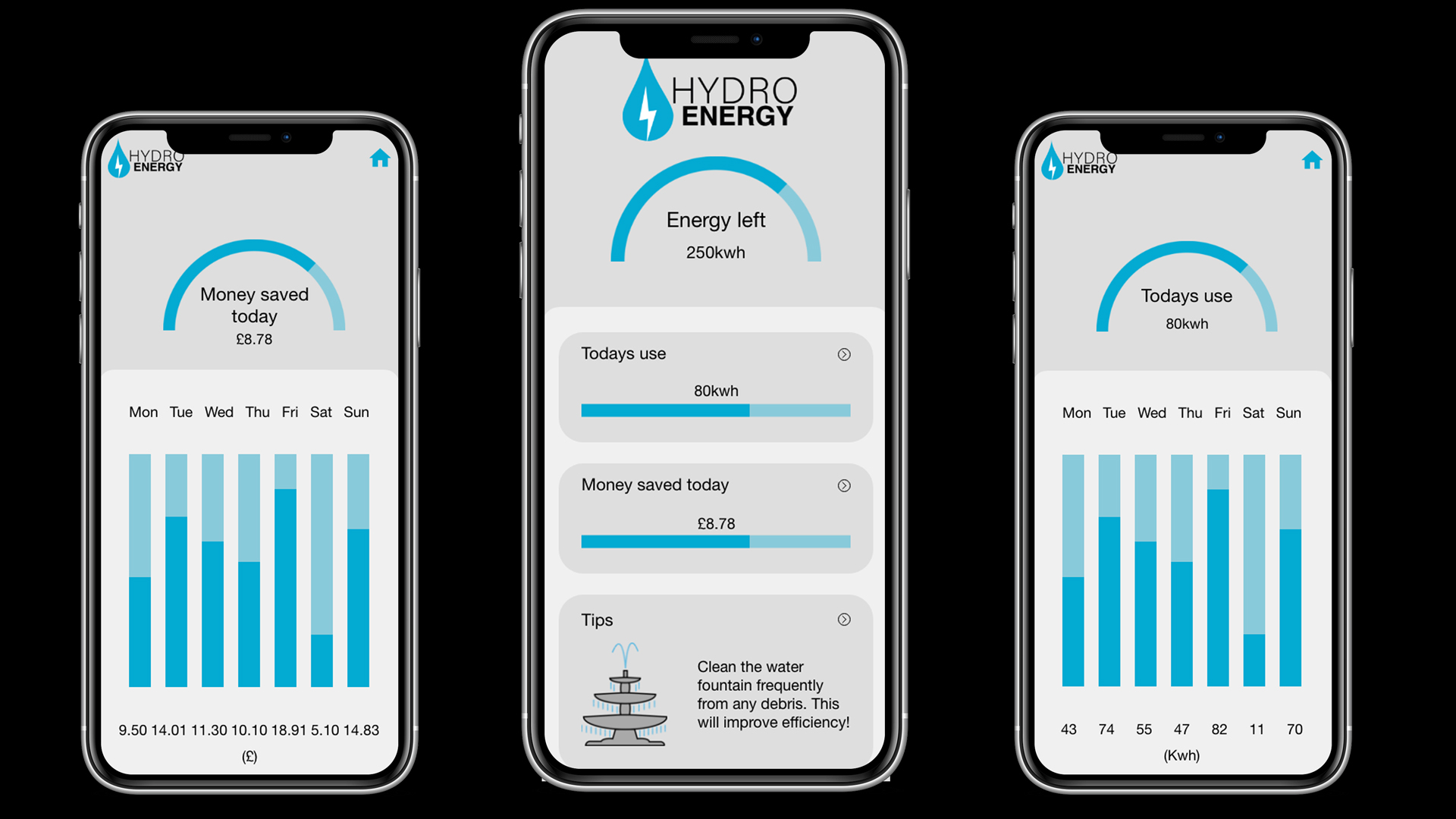
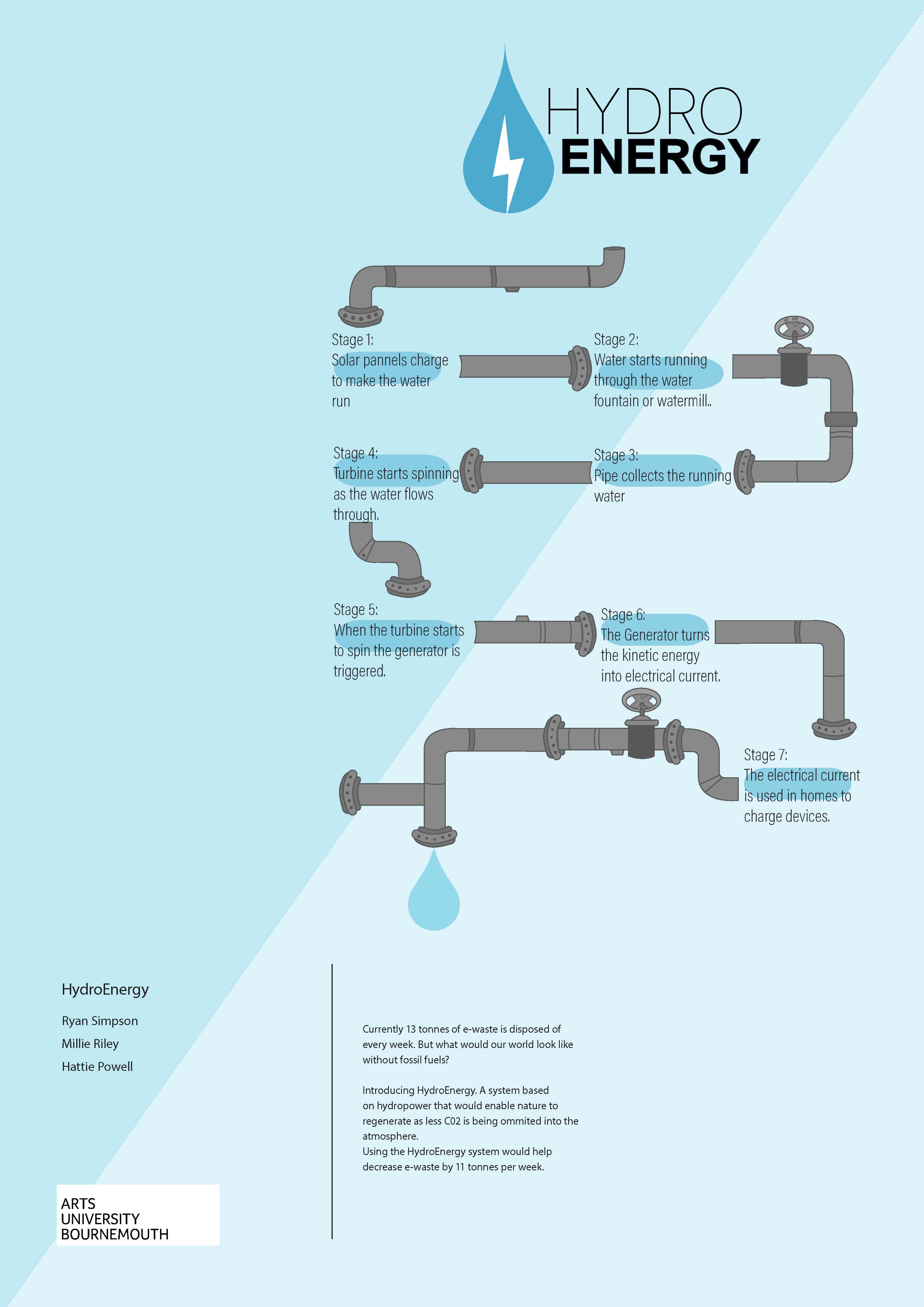
Learning to design speculatively has helped boost my creativity and ideation skills as our group had to develop a visual system which interrogated USB chargers in the context of the climate crisis, where limitations are taken away and there are no boundaries of our current world. Meaning we had to think outside the box and imagine a future where USBs are sustainable for our environment. I Feel like my team and I did a great job at tackling this, I was very pleased with our final outcomes and thought our exhibition at the end of the project was successful!